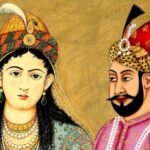Hamida Banu, the first female wrestler of India, blazed a trail in a sport that was predominantly male-dominated. Her journey from humble beginnings to becoming a national icon is a testament to her grit, determination, and passion for wrestling.
Hamida Banu: Pioneering India’s Wrestling Scene

Early Life: Born in a small village in Haryana, India, in the late 1970s, Hamida grew up in a family where wrestling was not just a sport but a way of life. Inspired by her father, who was a wrestler himself, she started training at a young age, honing her skills on the muddy akhara (wrestling pit) near her home.
Breaking Barriers: In a society where women’s participation in sports was often discouraged, Hamida faced numerous challenges. However, fueled by her passion, she continued to pursue her dreams relentlessly. She challenged societal norms by stepping into the traditionally male-dominated arena of wrestling.
Rise to Prominence: Hamida’s talent soon caught the attention of coaches and selectors. She began competing in local tournaments, where her exceptional technique and strength earned her recognition. Despite facing skepticism and criticism, she remained undeterred, steadily climbing the ranks in the wrestling circuit.
National Recognition: Her breakthrough came when she won the national wrestling championship, becoming the first Indian woman to achieve this feat. This victory not only made headlines but also inspired a generation of young girls across the country to take up wrestling.
Challenges and Triumphs: Hamida’s journey was not without its challenges. She faced financial constraints, lack of proper training facilities, and societal pressure. However, her determination and resilience helped her overcome these obstacles. She continued to train rigorously, often traveling long distances to compete in tournaments and represent her country.
Legacy: Hamida Banu’s legacy extends beyond her accomplishments on the wrestling mat. She paved the way for future generations of female wrestlers in India, breaking stereotypes and opening doors for women in sports. Her success inspired the establishment of women’s wrestling academies and training centers across the country.
Retirement and Beyond: After a successful career spanning over two decades, Hamida retired from competitive wrestling. However, her passion for the sport remained undiminished. She dedicated herself to coaching and mentoring young wrestlers, passing on her knowledge and experience to the next generation.
Recognition and Honors: Hamida’s contributions to Indian wrestling have been widely recognized. She has received numerous awards and accolades, including the Arjuna Award, India’s prestigious honor for excellence in sports.
Conclusion: Hamida Banu’s journey from a small village girl to India’s first female wrestler is an inspiring tale of courage, perseverance, and passion. Her trailblazing efforts have left an indelible mark on Indian sports history and continue to inspire aspiring athletes, especially young women, to pursue their dreams against all odds
Hamida Banu Begum
Hamida Banu Begum (Persian: حمیده بانو بیگم; c. 1527 – 29 August 1604) was the empress consort of the second Mughal emperor Humayun and the mother of his successor, the third Mughal emperor Akbar. She was bestowed the title of Mariam Makani (lit. ’Dwelling with Mariam’), by her son, Akbar. She also bore the title of Padshah Begum during the reign of Akbar.
Family
Hamida Banu Begum was born c. 1527 to a family of Persian descent. Her father, Shaikh Ali Akbar Jami, was a Shia preceptor to Mughal prince Hindal Mirza, while her mother was Maah Afroz Begum. Hamida was a devout Muslim.
Meeting with Humayun
She met Humayun, then in exile, at a banquet given by his mother, Dildar Begum, in Alwar. Initially opposed to the marriage proposal, she eventually agreed to marry him after forty days of pursuit.
Marriage
The marriage took place in 1541 in Sindh, making her Humayun’s junior wife. She gave birth to Akbar in 1542. Despite numerous journeys and hardships, she remained by Humayun’s side until his death in 1556.
Akbar’s Reign
During Akbar’s reign, Hamida Banu Begum wielded influence and intervened in court matters. She played a crucial role in politics, especially during the ouster of Mughal minister, Bairam Khan.
Death and Aftermath
Hamida Banu Begum died in 1604 and was buried at Humayun’s Tomb in Delhi. She was highly regarded by her son Akbar, who considered her the epitome of innocence. Her life is chronicled in various historical texts including Humayun Nama, Akbarnama, and Ain-i-Akbari.
Hamida Banu’s Life in 15 Points
- Birth: Hamida Banu Begum was born around 1527 to a Persian family.
- Family Background: Her father, Shaikh Ali Akbar Jami, was a Shia preceptor to Mughal prince Hindal Mirza, and her mother was Maah Afroz Begum.
- Meeting with Humayun: She met Humayun, the Mughal emperor, as a young girl at a banquet in Alwar.
- Marriage to Humayun: Hamida married Humayun in 1541, becoming his junior wife after Bega Begum.
- Birth of Akbar: In 1542, she gave birth to Akbar, who later became the third Mughal emperor.
- Perilous Journeys: She accompanied Humayun during his exiles and numerous perilous journeys, including to Persia and back.
- Influence during Akbar’s Reign: During Akbar’s reign, Hamida wielded influence and intervened in court matters, including the ouster of Mughal minister, Bairam Khan.
- Title of Mariam Makani: She was bestowed with the title of Mariam Makani by her son Akbar.
- Role in Politics: Hamida actively participated in politics and state affairs during Akbar’s reign.
- Mother-Son Relationship: Akbar held his mother in high regard, considering her the epitome of innocence.
- Death of Humayun: After the death of Humayun in 1556, she continued to support and guide her son Akbar.
- Death and Burial: Hamida Banu Begum died in 1604 and was buried at Humayun’s Tomb in Delhi.
- Reconciliation with Salim: She intervened in the conflict between Akbar and his son Salim (Jahangir), leading to a reconciliation.
- Influence on Akbar’s Rule: Hamida’s counsel and influence played a significant role in shaping Akbar’s policies and decisions.
- Legacy: Hamida Banu Begum’s life and legacy are chronicled in various historical texts, showcasing her strength, resilience, and political acumen during the Mughal era.
FAQs about Hamida Banu
1. Who was Hamida Banu Begum?
Hamida Banu Begum was the wife of Mughal Emperor Humayun and the mother of Emperor Akbar. Born into a Persian family, she played a significant role in Mughal history due to her influence on Akbar’s reign. Her intelligence, political acumen, and devotion to her family earned her the respect of both contemporaries and historians.
2. What was Hamida Banu’s role in Mughal politics?
Hamida Banu actively participated in Mughal politics, especially during Akbar’s reign. She advised her son on various matters of state, including the ouster of Bairam Khan and reconciling conflicts within the court. Her diplomatic skills and astuteness helped maintain stability during turbulent times.
3. How did Hamida Banu meet Humayun?
Hamida Banu met Humayun when he was in exile after being ousted from Delhi by Sher Shah Suri’s forces. Their meeting occurred at a banquet hosted by Humayun’s stepmother, Dildar Begum, in Alwar. Despite initial opposition to the marriage proposal, Hamida eventually agreed to marry Humayun.
4. What was Hamida Banu’s relationship with Akbar?
Hamida Banu had a close and influential relationship with her son, Akbar. He held her in high regard, considering her the epitome of innocence. She played a pivotal role in his upbringing and governance, shaping many of his decisions during his reign.
5. What title was given to Hamida Banu by Akbar?
Akbar bestowed the title of Mariam Makani (“Dwelling with Mariam”) upon his mother, Hamida Banu. This title reflected her esteemed position in the Mughal court and emphasized her importance in his life.
6. How did Hamida Banu contribute to Akbar’s education and upbringing?
Hamida Banu played a crucial role in Akbar’s education and upbringing. She instilled in him values of justice, tolerance, and compassion, which later became hallmarks of Akbar’s reign. Despite the challenges of their nomadic lifestyle during Humayun’s exile, she ensured Akbar received a well-rounded education.
7. What was Hamida Banu’s influence on Akbar’s religious policies?
Hamida Banu’s influence on Akbar’s religious policies was profound. She belonged to a Shia Muslim background but supported Akbar’s policy of religious tolerance and encouraged him to embrace a more inclusive approach to governance. Her influence helped shape Akbar’s vision of a unified empire.
8. How did Hamida Banu handle political challenges during Akbar’s reign?
Hamida Banu adeptly handled political challenges during Akbar’s reign by offering counsel and mediating disputes within the court. She played a crucial role in maintaining stability and fostering cooperation among the various factions of the Mughal nobility.
9. What was the significance of Hamida Banu’s marriage to Humayun for the Mughal Empire?
Hamida Banu’s marriage to Humayun was politically significant as it strengthened ties between Humayun and various Shia groups. This alliance proved beneficial during times of war and helped Humayun regain control of the Mughal Empire.
10. How did Hamida Banu contribute to the Mughal Empire’s stability during turbulent times?
Hamida Banu’s unwavering support and guidance provided stability to the Mughal Empire during turbulent times. Her diplomatic skills and ability to navigate complex political situations helped maintain unity and order within the empire.
11. What challenges did Hamida Banu face during her marriage to Humayun?
Hamida Banu faced numerous challenges during her marriage to Humayun, including exile, hardship, and separation from her son Akbar. Despite these challenges, she remained loyal to her husband and actively supported him in his efforts to reclaim the Mughal throne.
12. How did Hamida Banu influence Akbar’s views on women’s roles in society?
Hamida Banu’s influence on Akbar extended to his views on women’s roles in society. She served as a role model for strong and independent women, which likely contributed to Akbar’s progressive policies regarding women’s rights and empowerment.
13. What was Hamida Banu’s relationship with other Mughal royals?
Hamida Banu maintained cordial relationships with other Mughal royals, including Humayun’s other wives and their children. Despite being a junior wife, she earned the respect of the court and played a significant role in shaping Mughal history.
14. How did Hamida Banu’s upbringing influence her role in Mughal court politics?
Hamida Banu’s upbringing in a scholarly and politically astute family prepared her well for her role in Mughal court politics. She demonstrated intelligence, tact, and resilience, making her a valuable advisor to both Humayun and Akbar.
15. What was Hamida Banu’s legacy in Mughal history?
Hamida Banu’s legacy in Mughal history is one of strength, wisdom, and influence. She played a crucial role in shaping the early Mughal Empire through her guidance of Humayun and her influence on Akbar. Her contributions to Mughal politics and society are remembered as foundational to the empire’s success and stability.













